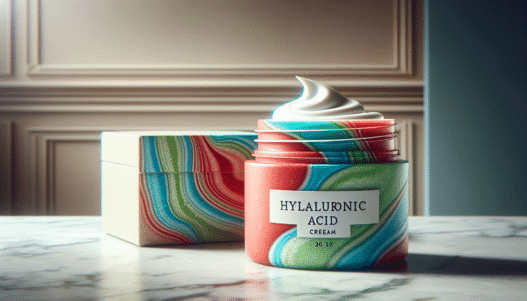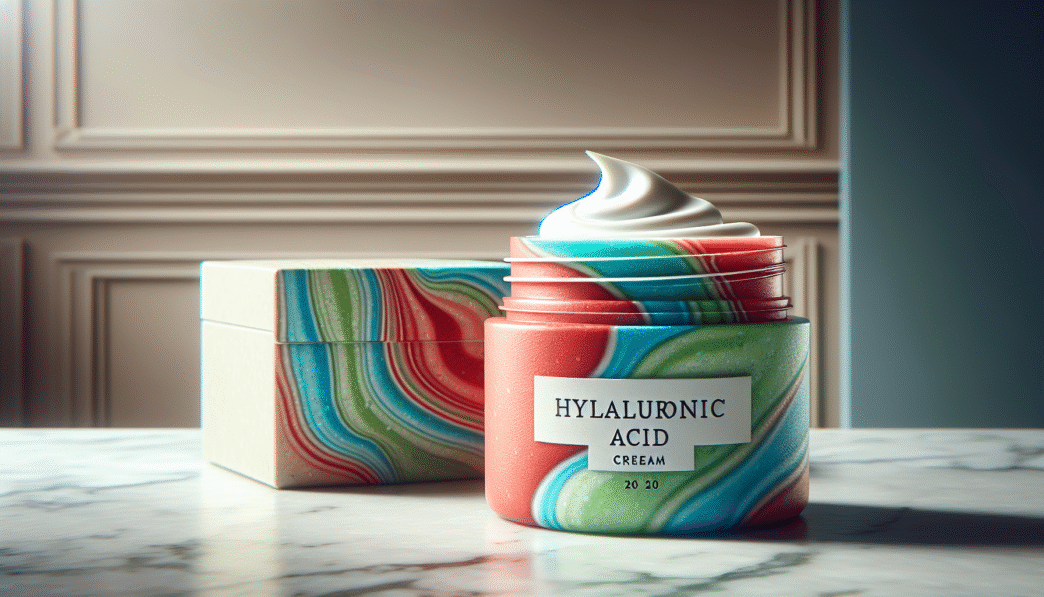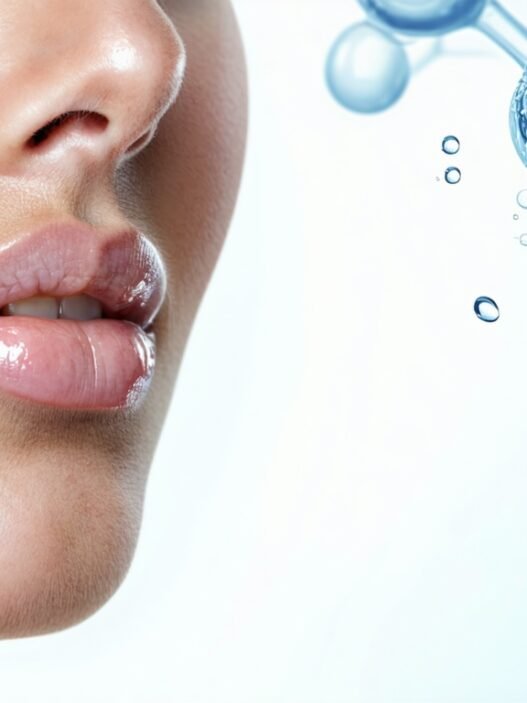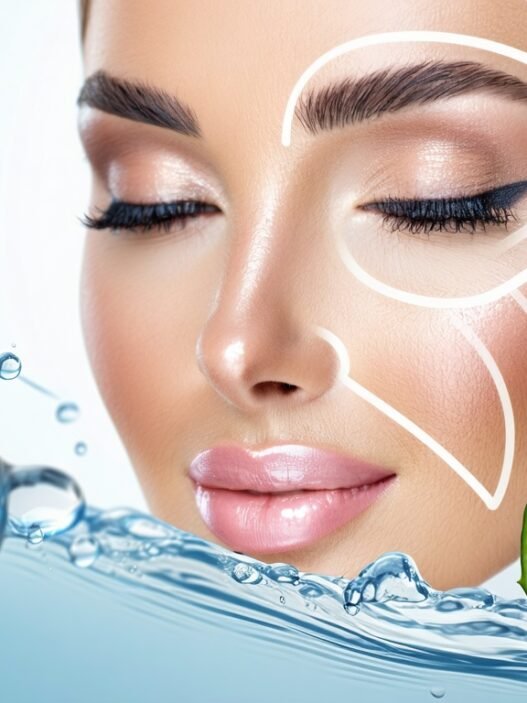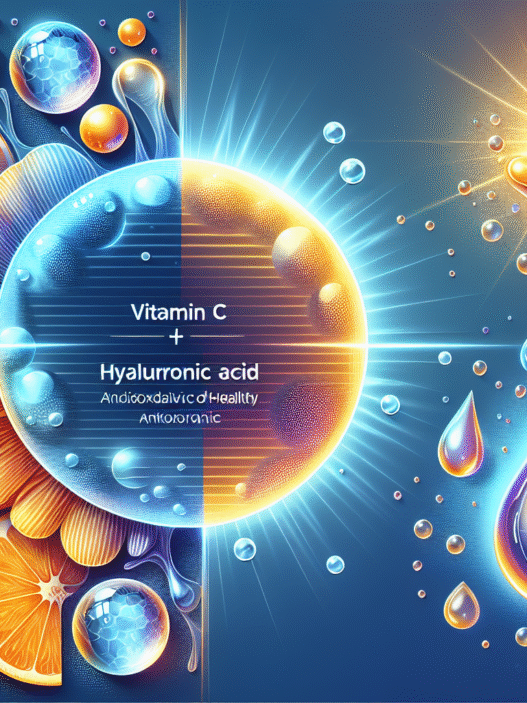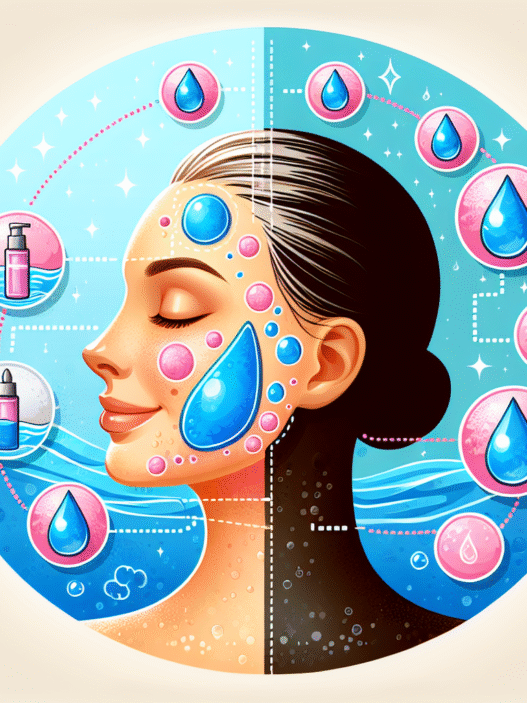Exploring Hyaluronic Acid
Introduction to Hyaluronic Acid
Hyaluronic acid is a gooey and slippery substance that the body naturally produces, found primarily in the eyes, joints, and skin. This large molecule plays multiple roles in the human body, particularly in the maintenance of hydration and tissue health (Cleveland Clinic). In skincare, it is celebrated for its ability to significantly improve the skin’s moisture levels.
Natural Production and Functions
Nearly half of the body’s hyaluronic acid resides in the skin, where it serves various functions. This compound can hold up to 1,000 times its weight in water, making it an exceptional moisturizer.
Here are some key functions of hyaluronic acid in the body:
| Function | Description |
|---|---|
| Hydration | Retains moisture in skin and joints, providing cushioning and suppleness. |
| Transport | Aids in transporting other molecules throughout the body, enhancing cellular function. |
| Scaffolding | Acts as a structural framework for tissue growth and repair. |
| Cushioning | Provides cushioning for joints, nerves, and skin, supporting overall health. |
As a notable humectant, hyaluronic acid helps improve the outer layers of the skin by binding water to the skin cells, promoting a plump and youthful appearance. Its hydrating properties have made it a popular ingredient in various skincare products, including hyaluronic acid creams and serums, which cater to beauty and skincare enthusiasts looking to combat the signs of aging and maintain healthy skin.
The inclusion of hyaluronic acid in skincare routines is becoming increasingly essential as it offers anti-aging benefits, such as enhancing skin elasticity and improving overall texture and firmness. By understanding hyaluronic acid’s natural production and functions, users can better appreciate its importance in both skincare and overall health.
Benefits of Hyaluronic Acid
Hyaluronic acid is a powerful ingredient used in many skincare products. It offers multiple benefits that contribute to a more youthful appearance and healthier skin. In this section, the focus will be on hydration, skin health, elasticity, and the role of hyaluronic acid in wound healing.
Hydration and Water Absorption
Hyaluronic acid is known for its exceptional ability to retain moisture. It can hold approximately one and a half gallons of water per quarter-teaspoon, making it the most effective natural polymer for water absorption (Cleveland Clinic). When applied topically, hyaluronic acid acts as a humectant, binding up to 1000 times its weight in water. This action helps keep the skin hydrated by slowing water evaporation from the surface.
| Moisture Retention | Volume of Water |
|---|---|
| Quarter-Teaspoon of Hyaluronic Acid | 1.5 gallons |
Skin Health and Elasticity
Hyaluronic acid plays a crucial role in maintaining skin health and promoting elasticity. Studies show that using hyaluronic acid with an optimal molecular weight, typically between 50 to 1,000 kDa, can increase skin elasticity by 20% after just one month of application (Healthline). This increase in elasticity contributes to firmer, more resilient skin, as well as a plump and hydrated appearance.
In a 2021 study, 40 females aged 30-65 applied hyaluronic acid twice a day, resulting in significant improvements in skin hydration, roughness, and elasticity after six weeks.
Role in Wound Healing
Hyaluronic acid is not only beneficial for hydration and elasticity but also plays a vital role in wound healing. It is a naturally occurring glycosaminoglycan found within the body’s connective tissues. Hyaluronic acid is responsible for providing structure to the skin, which aids in tissue repair and regeneration. By increasing moisture content and promoting skin repair, hyaluronic acid helps to reduce the appearance of wrinkles and scars, contributing further to youthful skin.
For those interested in harnessing the benefits of hyaluronic acid, using a hyaluronic acid moisturizer or hyaluronic acid serum can be effective ways to incorporate this powerful ingredient into a skincare routine.
Hyaluronic Acid in Skincare
Hyaluronic acid has gained popularity in the beauty and skincare industry for its hydrating and skin-rejuvenating properties. Its application can be divided into topical use, oral supplements, and safety considerations when using these products.
Topical Application
Topical application of hyaluronic acid, particularly in the form of creams, lotions, and serums, is one of the most common methods for harnessing its benefits. Over-the-counter hyaluronic acid products are considered safe for skin application according to the Cleveland Clinic. When applied, it attracts moisture to the skin, leading to improved hydration and plumpness.
| Product Type | Common Formulations |
|---|---|
| Creams | Daily moisturizers |
| Lotions | Lightweight hydrating layers |
| Serums | Concentrated treatments |
| Eye Care Products | Formulations for under eyes |
Long-term use of hyaluronic acid serum can enhance overall skin health and improve skin flexibility and elasticity. It is effective for various skin concerns, including aging and dryness.
Oral Supplements
Hyaluronic acid supplements taken orally are another way to incorporate this powerful ingredient into one’s skincare routine. Recent studies suggest that long-term use of these supplements can bolster skin health, flexibility, and elasticity (Cleveland Clinic). While more research is needed to determine the optimal dosages, many people report positive results when integrating hyaluronic acid supplements into their diets.
| Supplement Form | Dosage Recommendations |
|---|---|
| Capsules | Typically 100-200 mg daily |
| Powders | Follow manufacturer guidelines for mixing |
Considerations for Safe Use
Hyaluronic acid is generally considered safe to use. Reactions or adverse effects are rare, making it an appealing option for many skincare enthusiasts. It can be used safely during pregnancy or while nursing, providing versatility for women at various life stages (Cleveland Clinic).
For optimal results, it is essential to monitor skin’s response to any new product and to choose high-quality formulations. Combining hyaluronic acid products with other ingredients, such as those discussed in hyaluronic acid benefits, can enhance effectiveness, but it’s important to understand how these combinations may alter results.
Combining Hyaluronic Acid
Combining hyaluronic acid with other skincare ingredients can enhance its effectiveness and provide additional benefits for skin health. Here, we explore two specific combinations: pairing with retinol and synergies with other key ingredients.
Pairing with Retinol
Retinol is a well-known vitamin A derivative renowned for its anti-aging properties. When paired with hyaluronic acid, this combination can yield remarkable results for aging skin. Hyaluronic acid complements retinol by soothing the skin, without interfering with the efficacy of the vitamin A product. Additionally, this duo can help prevent excessive dryness, flaking, redness, and irritation associated with retinol use.
Retinol targets acne and reduces fine lines, while hyaluronic acid stimulates collagen production and maintains skin hydration. This makes it a perfect match for individuals looking to achieve a youthful complexion while keeping their skin nourished.
Synergies with Other Ingredients
Hyaluronic acid’s versatility allows it to pair effectively with several other skincare components. Here are a few noteworthy combinations:
| Ingredient | Benefits of Combination |
|---|---|
| Vitamin C | Boosts hydration and brightens the skin; recommended to use vitamin C in the morning and hyaluronic acid in the evening (Go-To Skincare). |
| Niacinamide | Ideal for sensitive skin; works to regulate sebum production and promote a brighter complexion while enhancing hydration. |
| AHAs/BHAs | Chemically exfoliate and cleanse the skin, providing a moisture boost when combined with hyaluronic acid. |
These combinations enhance the overall effectiveness of a skincare routine, promoting hydration, firmness, and a youthful appearance.
By strategically pairing hyaluronic acid with retinol and other beneficial ingredients, individuals can maximize their skincare results, addressing specific concerns while enjoying the hydrating benefits of this powerful compound. For more information on the benefits of hyaluronic acid, visit our article on hyaluronic acid benefits.
Types of Hyaluronic Acid Products
Understanding the different types and molecular weights of hyaluronic acid products can significantly influence their effectiveness in skincare. The following sections detail these variations for beauty and skincare enthusiasts.
Different Molecular Weights
Hyaluronic acid exists in various molecular weights, impacting its ability to penetrate the skin and provide hydration.
| Molecular Weight (kDa) | Description |
|---|---|
| Greater than 500 | Larger molecules struggle to penetrate the skin barrier, reducing effectiveness. (Healthline) |
| 50 to 1,000 | This range is recommended for optimal skin benefits, with approximately 130 kDa being considered the most beneficial according to recent studies. (Healthline) |
Products with smaller molecular weights penetrate deeper into the skin, allowing for more significant hydration and anti-aging effects. Larger molecules tend to stay on the surface, thus offering less noticeable results.
Effectiveness in Skincare
The effectiveness of hyaluronic acid products may vary based on their concentration and formulation.
| Product Type | Hyaluronic Acid Concentration | Purpose |
|---|---|---|
| High Concentration | Higher amounts target hydration and pro-aging support. | Ideal for those seeking intensive moisture. |
| Low Concentration | Smaller amounts often serve as humectants or for specific treatments, such as acne control and evening skin tone. | Suitable for lighter applications. |
Some skincare lines combine various molecular weights to maximize efficacy. Products like the Hada Labo Hyaluronic Acid Lotion, Hada Labo Premium Lotion, and The Ordinary’s Hyaluronic Acid 2% + B5 demonstrate this approach, providing both surface and deeper hydration. Interested readers can explore the benefits of these specific products further at hyaluronic acid serum and hyaluronic acid moisturizer.
When choosing a hyaluronic acid cream, it is essential to consider the molecular weight and concentration to match individual skin needs effectively. Always look for products that suit your skin type for optimal results and hydration.
Research and Studies
Clinical Findings
Numerous studies have explored the effectiveness and safety of hyaluronic acid, particularly in the realm of skin health. A 2021 study involving 40 women between the ages of 30 and 65 demonstrated notable benefits of applying topical hyaluronic acid twice daily. After six weeks, participants reported significant improvements in skin hydration, roughness, and elasticity. These findings suggest that incorporating a hyaluronic acid cream into skincare routines may enhance skin texture and moisture levels.
Benefits for Skin Health
Hyaluronic acid plays a vital role in skin health due to its unique ability to retain moisture. This compound can hold up to 1,000 times its weight in water, making it an exceptional hydrator. The increased hydration contributes to improved skin elasticity and firmness, giving the appearance of youthful skin. Additionally, hyaluronic acid is believed to aid in wound healing by regulating inflammation, playing a critical role in the repair of minor wounds and postsurgical scars (Medical News Today).
Safety Considerations
Hyaluronic acid is generally regarded as safe for topical and oral use. Over-the-counter products such as hyaluronic acid serums and creams are safe for most individuals. Oral supplements have also gained popularity and are considered safe for consumption (Cleveland Clinic). However, individuals receiving hyaluronic acid injections, especially for conditions like osteoarthritis, may experience side effects such as tenderness, swelling, and redness at the injection site. While serious side effects are rare, they may include infection or tissue necrosis, which would require medical intervention.
In conclusion, hyaluronic acid represents a powerful ingredient in skincare, demonstrating promising benefits for hydration, skin health, and wound healing, alongside a strong safety profile in both topical and internal forms.










